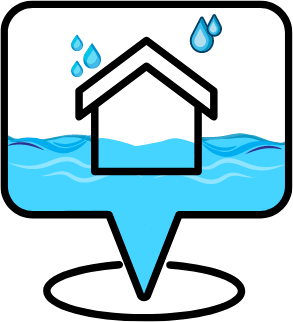Get to Know more about Flood Zones
What is a flood map?
Flood maps show a community’s risk of flooding. Specifically, flood maps show a community’s flood zone, floodplain boundaries, and base flood elevation.
Property owners, insurance agents, and lenders can use flood maps to determine flood insurance requirements and policy costs.
With NFIP’s pricing approach, Risk Rating 2.0, FEMA addresses rating disparities by incorporating more flood risk variables like flood frequency, multiple flood types — river overflow, storm surge, coastal erosion, and heavy rainfall — and distance to a water source, as well as property characteristics such as elevation and the cost to rebuild.
Because your flood risk changes over time, the National Flood Insurance Program (NFIP) and the Federal Emergency Management Agency (FEMA) work with communities across the country to identify and map flood risk on an ongoing basis.
Flood mapping data will still be necessary and essential for communities because of the important role that the Special Flood Hazard Areas (SFHA) serves for NFIP participating communities.
Additionally, Flood Insurance Rate Maps (FIRMs) will continue to be used for mandatory purchase requirements, building code requirements, and floodplain management requirements, as they have always been the backbone of those programs, but will no longer be the most significant factor.
What does my flood zone mean?
Everyone lives in an area with some flood risk—it’s just a question of whether you live in a high-risk, low-risk, or moderate-risk flood area.
Flood zones are indicated in a community’s flood map. Each flood zone describes the flood risk for a particular area, and those flood zones are used to determine insurance requirements and costs.

Know your property’s flood risk.
To find your community’s flood map, search using your property’s address. Here on What Is My Flood Zone
No matter where you live or work, some risk of flooding exists.
Learn more about your flood risk and secure the insurance protection you need to protect your home and financial security.
What are the moderate- to low-risk & high risk flood zones?
- Moderate- to low-risk flood areas are designated with the letters B, C, and X on FEMA flood maps. In these areas, the risk of being flooded is reduced, but not completely removed. One in three insurance claims come from moderate- to low-risk flood areas.
- High-risk flood areas begin with the letters A or V on FEMA flood maps. These areas face the highest risk of flooding. If you own a property in a high-risk zone and have a federally backed mortgage, you are required to purchase flood insurance as a condition of that loan.
Looking for help with your new or existing flood insurance policy?
Anytime during normal business hours we’re here for you either by phone or chat support.
If it’s after hours, you can always send us an email and one of our agents will reply as quickly as possible.
How It Works
National Flood Insurance, Flooding is the nation’s number one natural disaster. While floods occur in every area of the country, many property owners remain unprepared. Standard homeowners’ insurance does not cover flood damage.
Therefore, it is important to know what options are available to protect your assets from flood losses.
Get A Quote
We send you the lowest rates from multiple flood insurance carriers. You simply submit our online application in under 2 minutes! No one does it as quickly as we do!
Instant Coverage
We will send confirmation to your lender And email you a copy of your policy immediately! Making a payment is easy! You can pay online or we can bill your mortgage company. We do all the heavy lifting.
Enjoy the savings..
Just think what you can do with the money and time you saved! Join over 12,000 customers who have made the switch! Do the math! See our google reviews below!
Talk with an experienced agent
Talk with an experienced agent (888) 900-0404

Chat Support
A team member will be happy to assist you
Where can I learn more?
If you’re interested in how to read a flood map, learning how often flood maps change, of looking for information on how to change your flood zone designation visit FEMA’s Map Service Center.
Get answers to your flood map questions or talk with someone from FEMA’s Flood Map Service Center.
